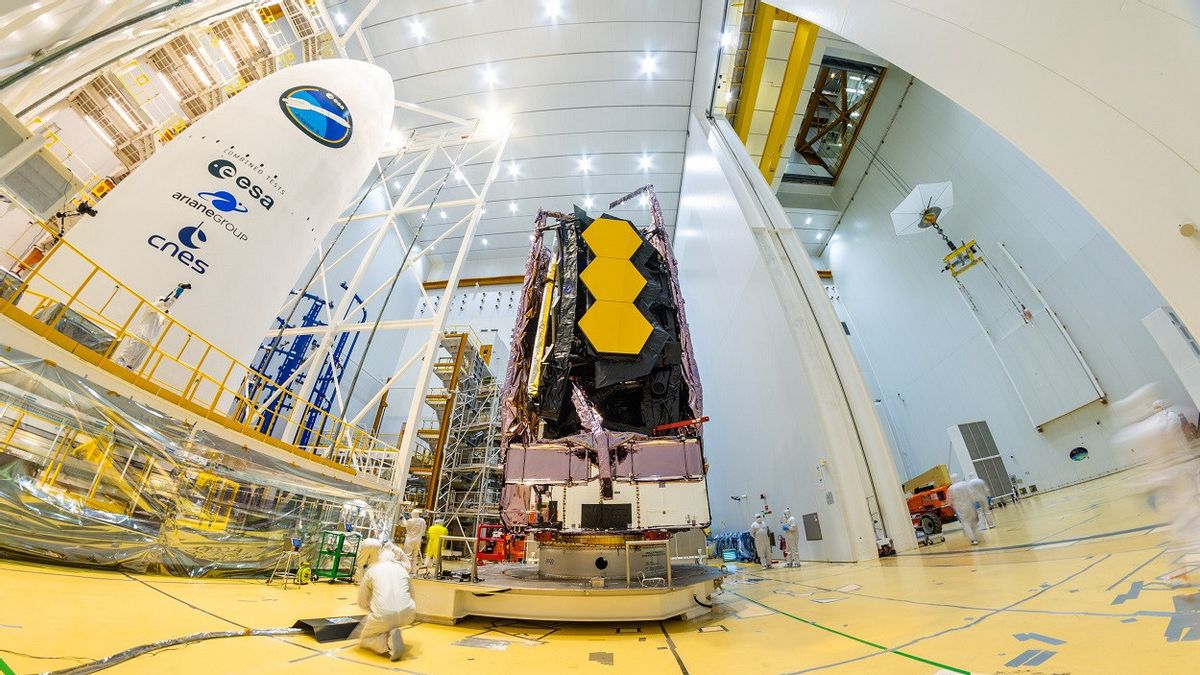JAKARTA - Although the completion time was delayed by several years and the costs involved were far greater than planned, NASA's James Webb Space Telescope, which will launch next week, could usher in a new era in astronomy. Because, it gathers information about the early stages of the universe, star formation, and whether planets outside our solar system might be suitable for life.
The orbiting infrared observatory, designed to be about 100 times more sensitive than its predecessor the Hubble Space Telescope, will launch on December 22 on an Ariane 5 rocket from a site in French Guiana, South America's northeast coast.
"We are going on this amazing journey of discovery", said astronomer Klaus Pontoppidan, Webb project scientist of the Space Telescope Science Institute in Baltimore, citing Reuters on December 15.
"We really meant to discover, because Webb has the raw power to reveal the unexpected. We can plan what we think we'll see. But in the end, we know that nature will surprise us more often than not."
The telescope, which has four scientific instruments, is an international collaboration led by NASA in partnership with European and Canadian space agencies. Northrop Grumman Corp is the prime contractor. The launch vehicle is part of the European contribution.
This telescope was developed at a cost of about 8.8 billion US dollars, or around IDR 126,396,600,000,000, with a total projected operating cost of around 9.66 billion US dollars or around IDR 138,748,995,000,000.

The US Government Accountability Office said prices have almost doubled since NASA set a cost baseline in 2009 after previous cost overruns. NASA had hoped to launch it in 2011, but the date was repeatedly delayed.
Scientists plan to use the telescope to study all phases of the universe's history since the Big Bang about 13.8 billion years ago, while also studying exoplanets, planets outside our solar system, and worlds closer to home, such as our planetary neighbors Mars and Saturn's moon Titan.
The Webb telescope will primarily view the universe in infrared, while Hubble has examined it since its 1990 launch primarily at optical and ultraviolet wavelengths.
In addition, the Webb telescope has a much larger light-gathering area, allowing it to see further distances, thus further into the past, than Hubble.
"We're looking forward to this and we're getting very, very close", said Greg Robinson, director of the Webb program at US space agency headquarters in Washington.
The telescope arrived in French Guiana in October, following a 16-day sea journey from California via the Panama Canal to Port de Pariacabo on the Kourou River. Once launched, the telescope will travel one million miles (1.6 million km) over the course of a month into an orbit further than Hubble, beyond the moon.
"We're going to look at everything in the universe that we can see. We want to know, how did we get here from the Big Bang, how does it work? So we'll see", said John Mather, Webb's senior project scientist at the Center for Aviation. NASA's Goddard Space Station in Greenbelt, Maryland.
Its mission objectives include searching for the first luminous galaxies or objects to form after the Big Bang, studying how galaxies evolved from their birth to the present day.
"We want to see the first galaxies to grow", said Mather.
SEE ALSO:
Its goals also include observing the formation of stars and the planets around them. Mather said Webb could peer into the clouds of gas and dust where stars are born. Until now, the dust in the clouds obscured the view.
"Infrared light will surround the dust grains instead of reflecting, so we can see them with the Webb telescope. And that's one of our main goals - to see how stars grow, with their young planets", said Mather.
To note, an instrument called a spectrometer can study the atmospheres of exoplanets.
The English, Chinese, Japanese, Arabic, and French versions are automatically generated by the AI. So there may still be inaccuracies in translating, please always see Indonesian as our main language. (system supported by DigitalSiber.id)


















